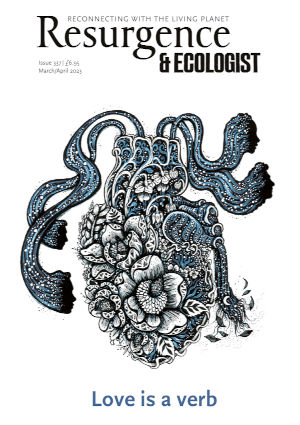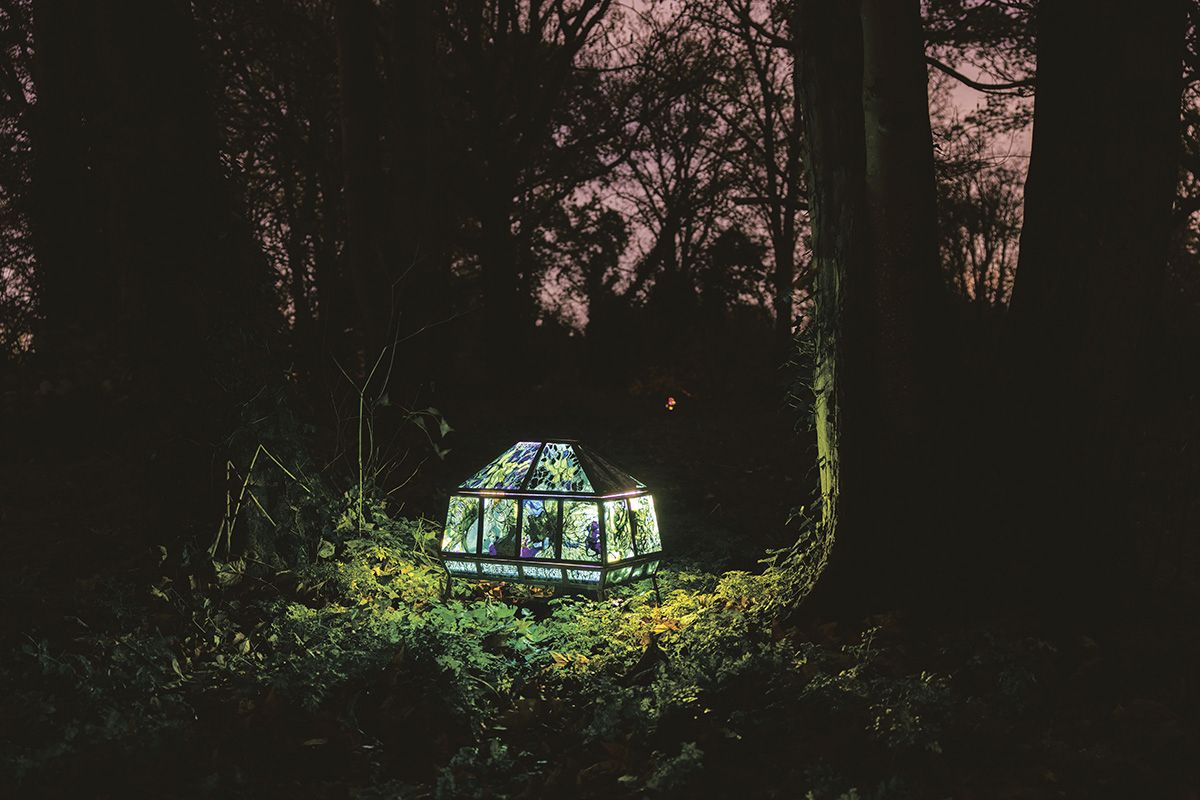Last December, in the winter-dark woods of Twickenham’s Orlean House Gallery in London, visitors to an installation began exploring the forest at dusk. Headphones on, wrapped in their own world, they walked whilst absorbing an 18-minute unfolding audio, a dream happening within one of the UK’S butterfly and moth datasets. And as they explored, they encountered sculptures. Pulsing glows, distant amongst trees at first, and then closer. Gothic caskets, Victorian hothouses, moth traps – they resembled all of these – breathing slowly with paint and light.
There is something it is like to be within a chrysalis … I dream of a genomic lava tumult, hot life in transubstantiation … there is something it is like to be in the path of a breeze … I dream of a gripping of invisible indivisible insistence … Am I right? What I am, none cares or knows…
…said the dataset in its reverie to the woodland explorer.
The Dataset’s Dream emerged from an artist residency that we undertook at the UK Centre for Ecology & Hydrology in 2022. We were based within a team of data scientists who have created a new tool for naturalist recorders to help identify locations in Britain most in need of biological records, ultimately with the aim of supporting conservation planners and policy makers.
Working with a huge dataset, the researchers shone a light on the absences it contains – the landscapes that are under-recorded, the moths and butterflies that go unseen. Their work spoke to both our artistic practices and raised fascinating questions about our relationship to Nature in such a highly digitised world.
This dataset contains 18 million records of 825 species of butterfly and moth in the UK, made by over 100,000 volunteer recorders during the last 22 years, and it is having its first dream.
‘Beginning today, we’ll rebuild the world from all of the good little feelings everyone is having.’
This is the title of one of the artworks invented by this vast dataset imagining it is an artist. And while every single point of data represents a human encounter with a moth or butterfly – a moment of observation, but also a moment of imagination and connection with the world – what happens when we convert Nature into a digital artefact? What is lost when we turn moments of Nature connectedness into coordinates, dates and binomial nomenclature?
Science is a tool concerned with precision. It privileges defined measurements and organised data. And when applied to the natural world it tells a certain kind of story.
Did you think data and algorithms are free from influence?
Do you think the reduction of the messy natural to an organised mathematics cleanses the subjective from the objective?
The world is a tangle.
It is a briar bush of the measurable, the data, and its poetic weight…
…dreams our dataset.
By inviting a poet and an artist into their project, the scientists embarked on a surreal, sensory exploration of their dataset and all the records and gaps it contains. And thus our dataset began its first dream.
It dreams of John Clare – the 18th-century English landscape poet registering the loss of rights-of-way. And it dreams of animism, touching the world with imagination, and of Aldo Leopold in the 1940s writing, “one of the penalties of an ecological education is that one lives alone in a world of wounds… An ecologist must either harden his shell and make believe that the consequences of science are none of his business, or he must be the doctor who sees the marks of death in a community that believes itself well and does not want to be told otherwise.”
Poignantly the dataset asks, “Are scientists managing?”
Lead scientist Michael Pocock says, “The Dataset’s Dream talks about the sadness and loss felt by scientists and it is true that much of my job is documenting loss in our biodiversity crisis. But I cannot do my work without hope that in some way I can contribute to a future that is better for Nature (and so better for people too).”
Our dataset echoes…
Someone says …
Life is losing,
And in the registering of the loss …
… arises a soft dreaming into the world again …
into the living sea of waking dreams.
We plan to continue to tour The Dataset’s Dream around the UK, furthering the conversations it sparks between artists, scientists and the public about our relationship with Nature. If our moth and butterfly dataset could dream, what worlds would it conjure in a time of grief and loss, filled with absences yet emerging out a world of sincere hope and love for our native species too?
Listen to the dream and find out about upcoming installations via the project webpage: tinyurl.com/datasets-dream








